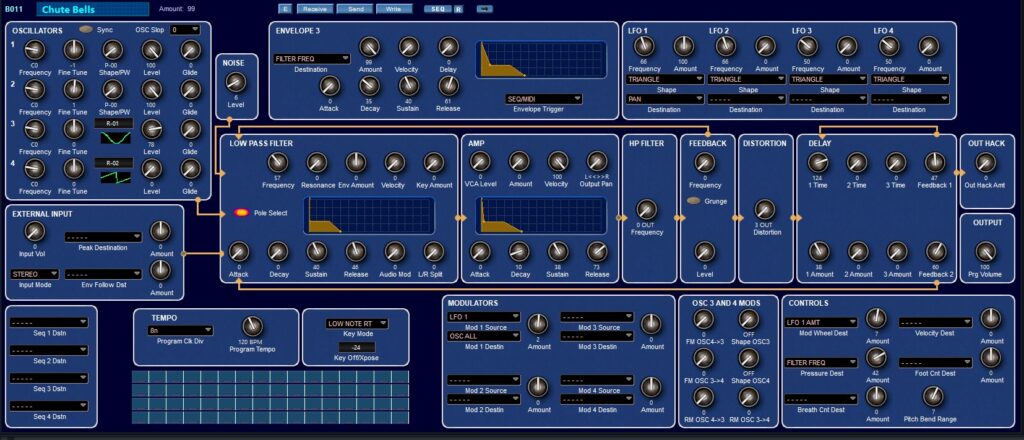
This one’s a simple bell sound with a bit of noise and delay. In the video I used two thin pulse waves and a formant waveform. There are specific bell wave shapes available for oscillators 3 and 4 but I chose not to use them for this bell sound. Just goes to show you a generic pulse wave can do wonders. Check the Wave Shapes Chart below to find the exact numbers for the bell wave shapes if you’d like to experiment with those.
These tutorials should be repeatable on most synthesizers, so try to follow along with whatever synth you’ve got. If you don’t have similar functions on the synth- try figuring out another way to achieve the same effects. It’s a great way to learn synthesis.
Full disclosure: I’m still learning this thing. It’s not your average synthesizer. It’s super deep, well designed but complex, and to be honest there’s not a ton of user guides or videos on it. Fortunately the Poly Evolver is great for learning and exploring considering it’s almost one-knob-per-function. The Carbon 111 guide is probably the best, but even that falls short of going in-depth and creating sounds. I’m hoping to dive deep into this thing, with you all. If I miss-speak on anything in the videos, or you have any tips for using it- please let me know in the comments!
Is there a wilder synthesizer than the Poly Evolver? What other synth is like a modular in keyboard form?
Stylized Poly Evolver Wave Shapes Chart: DOWNLOAD
Sound Editor Screenshot:
Chute Bells:
The MOTHER of all LINE MIXERS // Roland M-480 Rackmount Line Mixer
This one’s a simple bell sound with a bit of noise and delay. In the video I used two thin pulse waves and a formant waveform. There are specific bell wave shapes available for oscillators 3 and 4 but I chose not to use them for this bell sound. Just ...
| Play | Cover | Release Label |
Track Title Track Authors |
|---|


